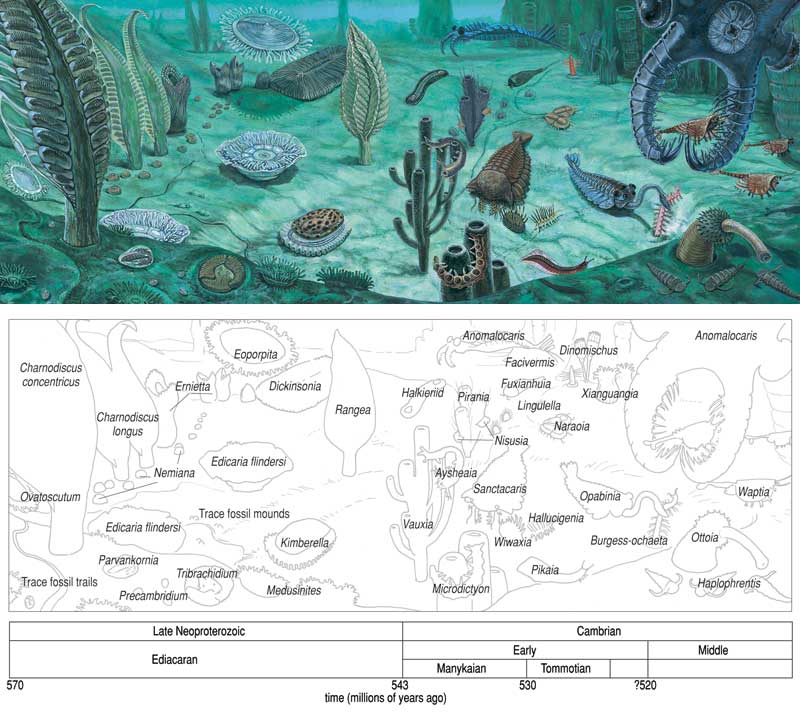|
Figure 2. Fossils from the last 3.5 billion years show a relatively
abrupt transition from body plans of single cells to a rich diversity
of animal-body architectures. The first multicellular animals appear
about 570 million years ago, shortly before the beginning of the
Cambrian, and examples of them are shown on the left of this
reconstruction. They did not have mineralized skeletons, but were
instead soft-bodied creatures resembling sea pens or jellyfish. These
were joined about 35 million years later by the animals represented in
the center of the reconstruction—shelled invertebrates, including
clams, snails and arthropods such as trilobites. Soon after,
echinoderms such as starfish appeared, followed by chordates, the
lineage that gave rise to humans and all other vertebrates. All of the
basic architectures of animals were apparently established by the close
of the Cambrian explosion. Subsequent evolutionary changes, even those
that allowed animals to move out of the sea onto land, involved only
modifications to those basic body plans. |

